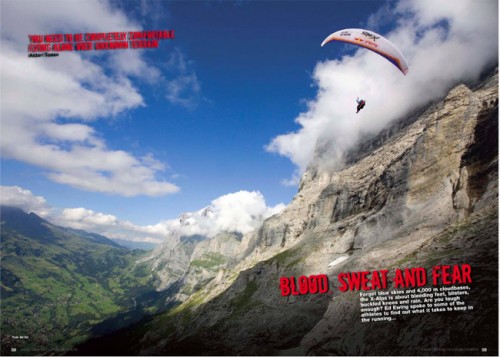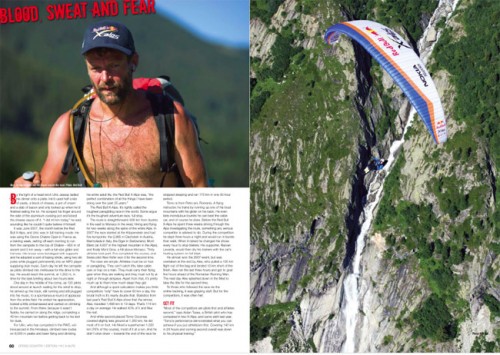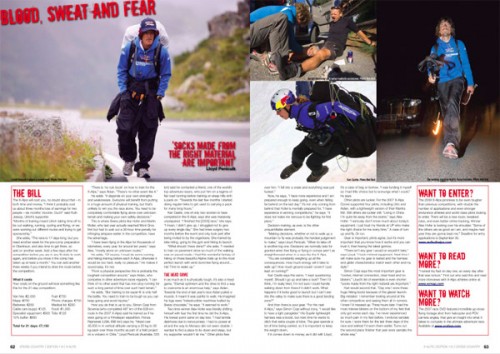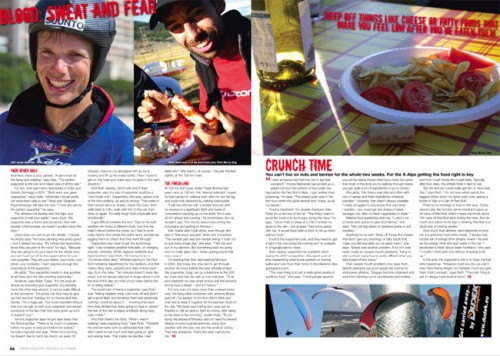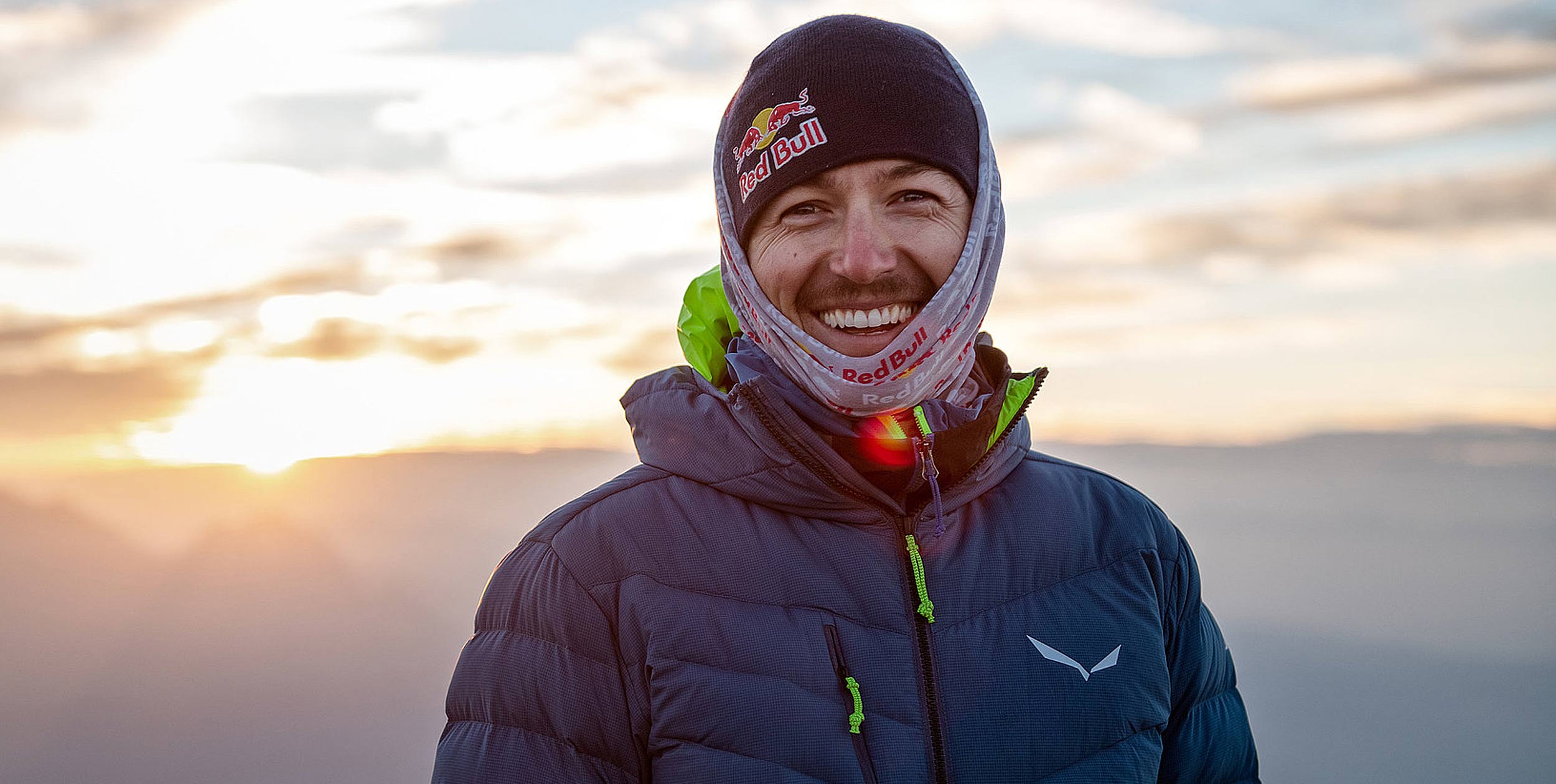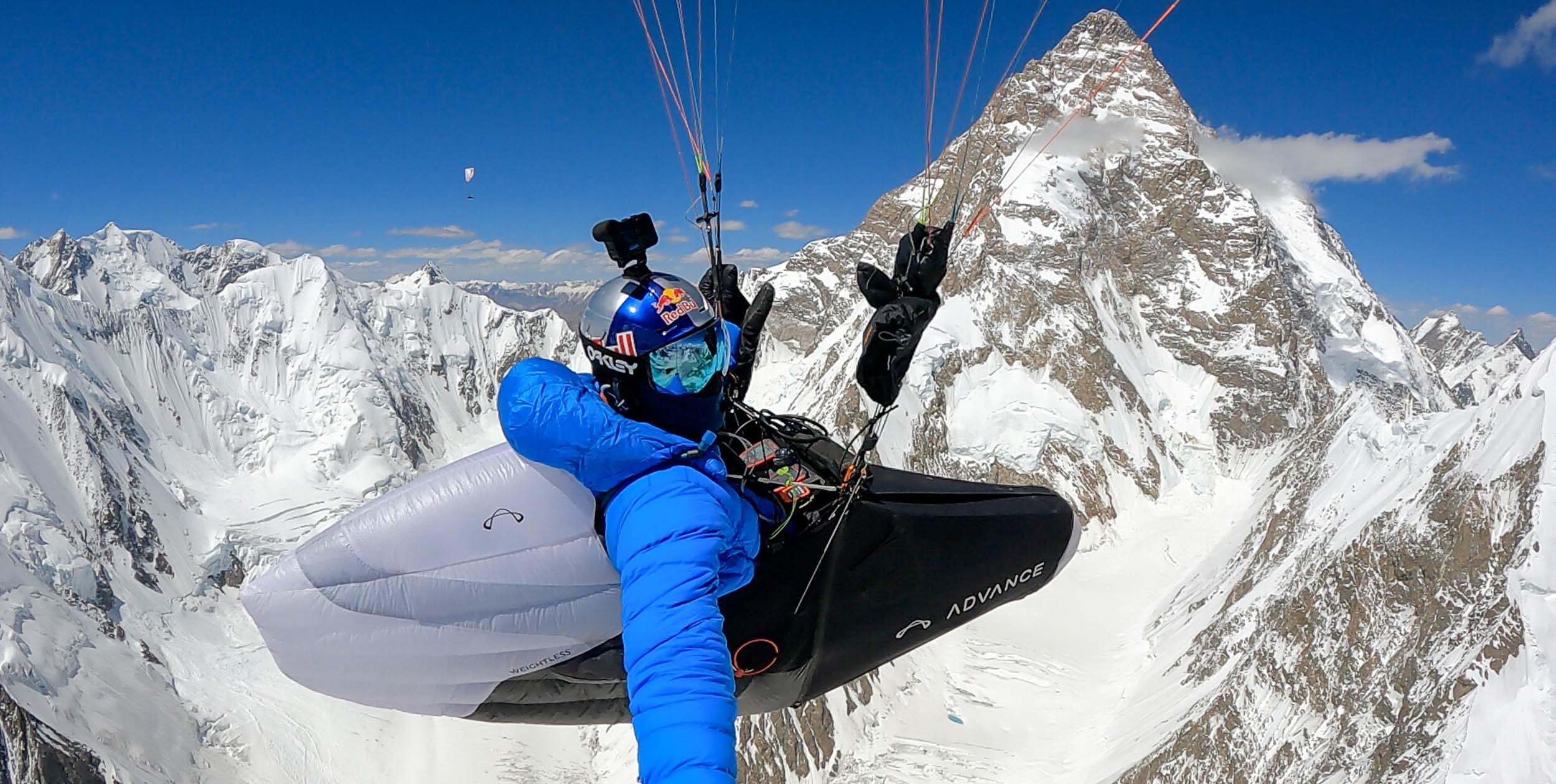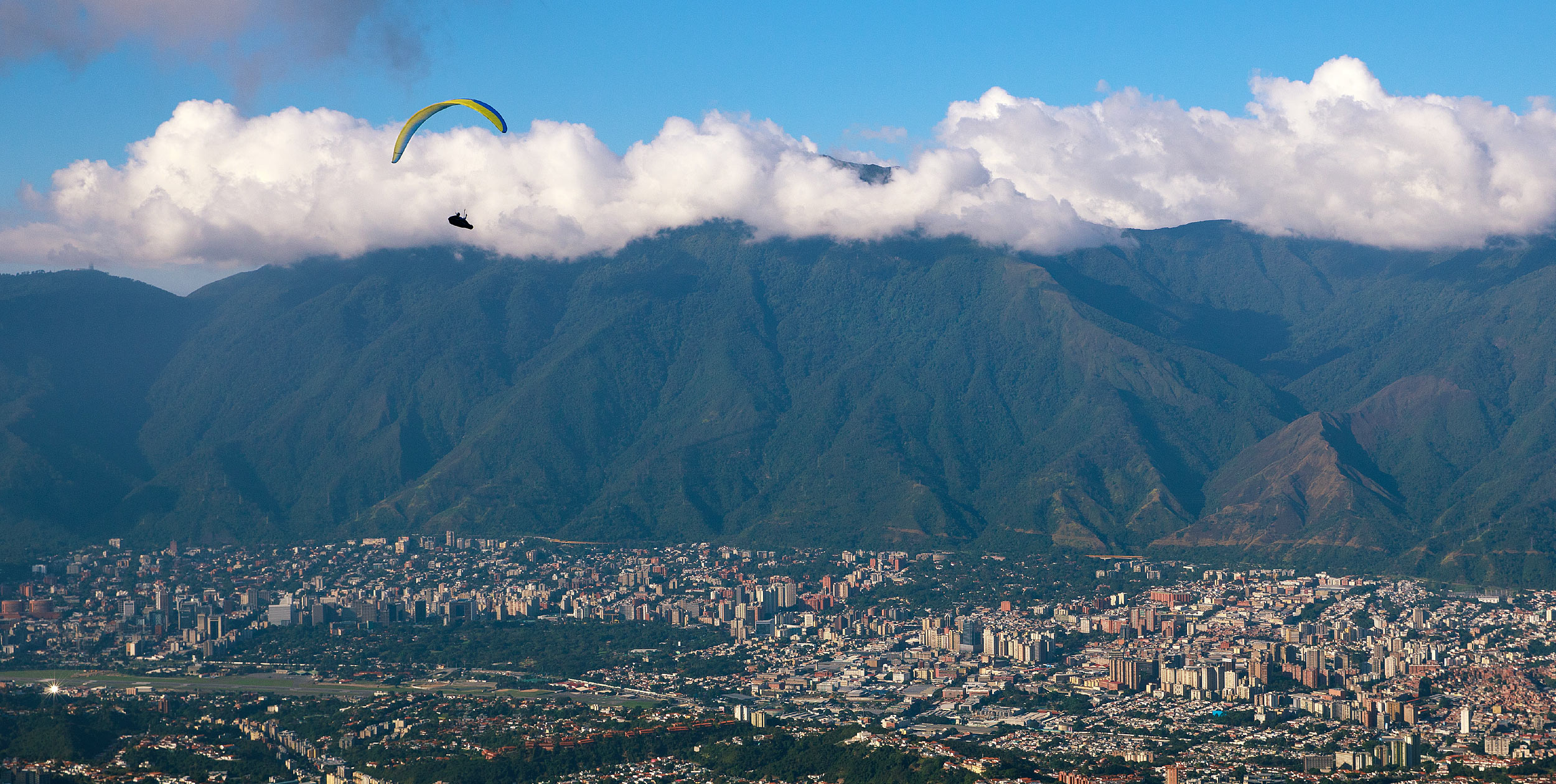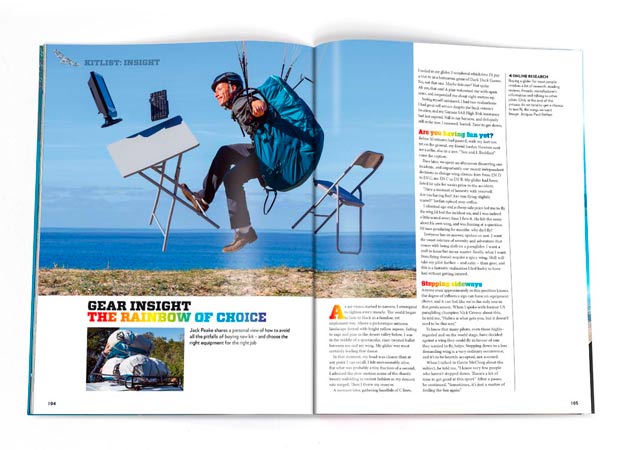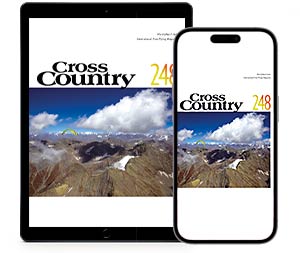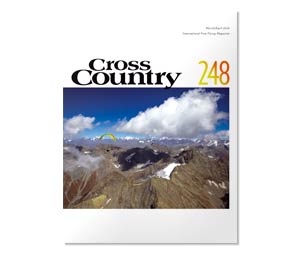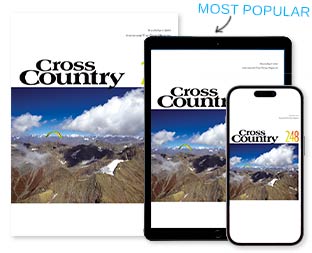Forget blue skies and 4,000 m cloudbases…
…the Red Bull X-Alps is about bleeding feet, blisters, buckled knees and rain. Are you tough enough? Ed Ewing spoke to some of the athletes to find out what it takes to keep running…
With applications now open for the Red Bull X-Alps 2011 we pulled this article out of the archive. It was first published in Cross Country magazine in October 2008
By the light of a headtorch Ulric Jessop ladled his dinner onto a plate. He’d used half a kilo of pasta, a block of cheese, a pot of cream and a slab of bacon and only looked up when he’d finished eating the lot. He scraped his finger around the side of the aluminium cooking pot and licked the cheese sauce off it. “I did 40km today,” he said, sounding like he couldn’t quite believe it himself.
It was June 2007, the month before the X-Alps, and Ulric was in full training mode. He was using the Ozone Chabre Open in France as a training week, setting off each morning to run from the campsite to the top of Chabre – 800m of ascent and 5 km away – with a full-size glider and harness. His knees were bandaged with supports and he adopted a sort of loping stride, using two ski poles while plugged permanently into an MP3 player listening to club music. Each day he left the campsite as pilots climbed into minibuses for the drive to the top. He would reach the summit, at 1352m, in time for the task briefing about two hours later.
One day in the middle of the comp, as 120 pilots stood around at launch waiting for the wind to drop, he arrived up the track, still running and still plugged into his music, to a spontaneous round of applause from the entire field. He smiled his appreciation, looked a little embarrassed and carried on climbing to the summit. From there, because it wasn’t flyable, he carried on along the ridge, completing a 40km mountain run before getting back to his tent for dusk.
For Ulric, who has competed in the PWC, bivvi-flown in the Himalaya, climbed new routes on 8,000m peaks and been flying and climbing his entire adult life, the X-Alps was, “the perfect combination of all the things I have been doing over the past 25 years”.
The X-Alps. It’s rightly called the toughest paragliding race in the world. Some argue it’s the toughest adventure race, full stop.
The route is straightforward: 838 km from Austria in the east to Monaco in the west, hiking and flying for two weeks along the spine of the entire Alps. In 2007 the race started at the Krippenstein and had five turnpoints: the 2,995m Dachstein in Austria, Marmolada in Italy, the Eiger in Switzerland, Mont Blanc (at 4,807m the highest mountain in the Alps), and finally Mont Gros, a hill above Monaco. Thirty athletes took part. Five completed the course, and Swiss pilot Alex Hofer won it for the second time.
The rules are simple. Athletes must be on foot or paragliding. They can’t catch lifts, take cable cars or hop on a train. They must carry their flying gear when they are walking and they must not fly at night or through airspace. Apart from that, it’s pretty much up to them how much sleep they get.
And although a quick calculation makes you think competitors “only” have to cover 60 km a day, the brutal truth is it’s nearly double that. Statistics from the 2007 Red Bull X-Alps show that the winner, Alex, travelled 1,488 km in 13 days. That’s 114 km a day on average. He walked 40% of it and flew the rest.
And while second-placed Tomo Coconea covered slightly less ground at 1,350 km, he did most of it on foot. He hiked a superhuman 1,020 km (76% of the course), most of it at a run. And he didn’t slow down – towards the end of the race he stopped sleeping and ran 170 km in one 30-hour period.
Tomo is from Petrosani, Romania. A flying instructor he trains by running up one of his local mountains with his glider on his back. He even bets incredulous tourists he can beat the cablecar, and of course he does. Before the X-Alps he spent three weeks driving through the Alps investigating the route, something any serious competitor is advised to do. During the competition he slept three hours a night and would run in bursts then walk. When it rained he changed his shoes every hour to stop blisters. His supporter, Razvan Levarda, would then dry his trainers using the car’s heating system switched to full blast.
He almost won the 2007 event, but was overtaken at the end by Alex, who pulled a 100 km flight out of the bag and landed 13 km short of the finish. Alex ran the last three hours and got to goal five hours ahead of the Romanian Running Man. The next day Alex splashed down in the Med to take the title for the second time.
To those who followed the race via the online tracking, it was gripping stuff. But for the competitors, it was often hell.
“Most of the competitors are pilots first and athletes second,” says Aiden Toase, a British pilot who has competed in two X-Alps, and came sixth in 2007. “Tomo’s performance demonstrated what you can achieve if you put athleticism first. Covering 140 km in 24 hours and coming second overall was down to his physical training.”
There is “no rule book” on how to train for the X-Alps says Aiden. “There’s no other event like it.”
He adds: “It depends on your own strengths and weaknesses. Everyone will benefit from putting in a huge amount of physical training but that’s unlikely to win you the race alone. You need to be completely comfortable flying alone over unknown terrain and making your own safety decisions.”
This is where Swiss pilots like Hofer and Martin Muller, who in 2007 actually reached Mont Gros first but had to wait out a 36-hour time penalty for infringing airspace earlier in the competition, have the advantage.
“I have been flying in the Alps for thousands of kilometres every year for around 10 years,” says Alex, “mostly alone on unknown routes.”
He adds, “Of course, I must do some running and hiking training before each X-Alps, otherwise it would be too hard, really no pleasure.” He makes it sound easy. It’s not.
“From a physical perspective this is probably the toughest competition around,” says Aiden, who competes in other adventure races regularly. “I can think of no other event that has non-stop running for such a long period of time over such hard terrain.”
He adds, “But training to be super fit is only half the battle. You need to train to be tough so you can keep going and avoid injuries.”
How you do that is up to you. Simon Copi from Slovenia (who completed 487 km of the 838 km route in the 2007 X-Alps) said he trained as if he was going on a Himalayan expedition. Honza Rejmanek (USA, 696 km) says he, “hiked over 45,000m in vertical altitude carrying a 20kg to 30kg pack over three months as part of a field project on a volcano in Chile.”
Lloyd Penicuik (Australia, 555 km) said he contacted a friend, one of the world’s top adventure racers, who put him on a regime of flat road running before training on steep hills with a pack on. “Towards the last few months I started doing regular treks to get used to carrying a pack for long hours.”
Kari Castle, one of only two women to have competed in the X-Alps, says she was massively unprepared. “I finished the [2005] race,” she says. “I mean, I didn’t give up. I struggled not to give up every single day.” She had knee surgery two months before the event and only took part after being invited to by the organisers. She trained by bike riding, going to the gym and hiking to launch.
“What should I have done?” she asks. “I needed to train on pavement since so much of the walking was on paved roads. I had this wonderful fantasy of hiking on these beautiful Alpine trails up to the most perfect launch with wind dummies flying around… Ha! Time to wake up.”
As much as being physically tough it’s also a head game. “Eternal optimism and the drive to find a way to overcome is an enormous help,” says Aiden. Towards the end of last year’s race Aiden pulled a muscle. It meant it was painful to walk. He imagined his legs were “indestructible machines fuelled by Swiss chocolate,” he says. “It seemed to work.”
Two-time winner Alex Hofer was literally shitting himself with fear the first time he did the X-Alps. His lowest point came on day two: “I had terrible diarrhoea due to nervousness. I had no power at all and the way to Monaco did not seem doable. I wanted to find a place to lie down and sleep but my supporter wouldn’t let me.” Other pilots flew over him. “I fell into a creek and everything was just fucked.”
Now, he says, “I have more experience and I am well prepared to keep going, even when falling far behind on the last day.” It’s not only coming from behind that Hofer is mentally prepared for. “I have experience in winning competitions,” he says. “It does not make me nervous to be fighting for first place.”
Decision making, as ever, is the other unquantifiable element.
“Making decisions whether to walk up a mountain to fly was probably the hardest judgement to make,” says Lloyd Penicuik. “When to take off is another big one. Decisions we normally take for granted when free flying or flying in comps aren’t as straightforward when in a race like the X-Alps.
“You are constantly weighing up all the consequences. How much energy will it take to walk up? How much ground could I cover if I just kept on running?”
Kari Castle says the same. “I kept questioning myself. Should I go up and take a look? Then I’d think, I’m really tired, I’m not sure I could handle walking down from there if it didn’t work. What happens if it looks good to launch but I can’t see into the valley to make sure there is a good landing zone?”
And then there is your gear. “For the next X-Alps,” says Simon Copi without irony, “I would like to have a light paraglider.” His SupAir lightweight harness was a boost, but next time he wants to ditch that extra couple of kilos. The gear spends a lot of time being carried, so it is important to keep the weight down.
If it comes down to money, as it did with Lloyd, it’s a case of beg or borrow. “I was funding it myself so I had little choice but to scrounge what I could,” he says.
Other pilots are luckier. Ozone supported four pilots, including Ulric and Aiden, with a lightweight version of their Mantra M2 for the 2007 X-Alps. Still others are luckier still: “Living in China I’m quite far away from the scene,” says Alex Hofer. “I seriously don’t know much about today’s equipment. I just trust my friends at UP who make the right choice for me every time.” A case of turn up and fly. Or run.
Gear is important, pilots agree, but it’s more important that you know how it works and you trust it than you have the latest gizmos.
“There isn’t any gear I would or wouldn’t take,” says Lloyd. “I took minimal equipment. Next time I will make sure my gear is tested and harness and glider characteristics match each other and my style.”
Simon Copi says the most important gear is “cooker, internet connection, clear head and no blisters.” Lloyd’s list of essentials is even shorter: “socks made from the right material are important.”
Kari would second that. “Day one I wore these huge hiking boots because of the glacier launch. Big mistake! I remember looking around at the other competitors and seeing them all in runners. I knew I’d messed up.
“Three hours later I had the most intense blisters on the bottom of my feet that only got worse each day. I’ve never experienced so much pain in my feet before.
“I endorse sandals for sure. I wore them for the last three days of the race and wished I’d worn them earlier. Turns out the second place finisher that year wore sandals the whole way.”
And then, there is your partner. “A pilot must do the flying and walking,” says Alex. “The perfect supporter is the one who takes care of all the rest.”
For him, that was Heinz Haunschild in 2005 and Sandro Schnegg in 2007. “Both were very great supporters,” says Hofer, “otherwise I would surely not have been able to win.”
“For athletes not familiar with the Alps your supporter is half your battle,” says Lloyd. “My supporter was a friend and someone I flew socially with. Unfortunately we haven’t spoken since the race.”
Lloyd does not care to go into details – instead saying positively “his route planning was pretty good” – but it tainted his race. “It’s critical that supporters know they are part of the race,” he says.
“Basically they are going to be your slave for the whole race, you can’t just run off to the supermarket for your own supplies. They are your lifeline, your cook, your driver, your motivator. I can’t express enough the importance of the supporter.”
He adds, “Your supporter needs to stay positive at all times and not take anything personally.”
However, says Aiden Toase, “it’s not quite as simple as choosing your supporter. It’s probably more the other way around. It can be really difficult to find someone.”
He points out they have to give up their summer holidays for no money and little thanks. “It’s a huge ask. The most important thing is that you can get on with your supporter and remain conscious of the fact that they have given up a lot to support you.”
Tomo’s supporter says he got less sleep than the Running Man. “There is so much to prepare before he goes to bed and before he wakes,” he told a reporter last year.
“When he’s running, he doesn’t like to carry too much so every 30 minutes I have to run alongside him as he is moving and fill up his water bottle. Then I have to get on the road and make sure he goes the right direction.”
And Ruth Jessop, Ulric’s wife and X-Alps supporter, says the role of supporter could be a “very lonely one”. Supporters, she says, spend a lot of the time walking, as well as driving. “The reality is that I would drive on ahead, check the route, then walk back to Ulric, walk with him to the car, then drive on again. It’s really tough both physically and emotionally.”
It got difficult towards the end. “Due to the bad weather we chose a different route, one that we hadn’t driven before the comp, so I had to work really hard to find where the paths went, sometimes jogging them to check that they went through.”
Supporters also have to get the technology right. “Like constant weather forecasts, or charging phones, cameras, GPS, laptops, batteries and head torches,” says Ruth. “Or having to do a 10-minute video diary.”
Athletes are contracted to the Red Bull marketing department for the duration, and that means filing video, pictures and diary entries each day. It’s in the rules. “Ten minutes doesn’t seem like much, but we always seemed to forget about it until the end of the day so most of our video dairies are of us falling asleep.”
The worst part of being a supporter, says Ruth, was “feeling helpless when Ulric took off and didn’t get a good flight and knowing there was absolutely nothing I could do about it … knowing that each time they land they are going to have to spend the rest of the day trudging endlessly along busy main roads.”
And then there’s the food. “When I wasn’t walking I was preparing food,” says Ruth. “Towards the end we were both so exhausted that Ulric didn’t want to eat much and kept going on gels and energy bars. That made me feel like I had failed him.” She didn’t of course – the pair finished eighth, at the 708 km mark.
THE FINISH LINE
At 102 km from goal Aiden Toase finished the 2007 race at 736 km. His “eternal optimism” meant he had carried on walking even after he hurt his leg and could only descend by walking backwards.
“I still had 400 km left, a terrible forecast with no chance of a significant flight and loads of competitors catching up on me while Tomo was 40 km ahead and running,” he remembers. But he wouldn’t quit. “For me it’s about overcoming the mountains and getting to Monaco.”
Kari Castle didn’t quit either, even though she was in “last place securely” when she competed. “The hardest part was the mental energy it took not to quit every single day,” she says. “I felt lost and out of my element. But something kept me going and I’m really glad I did. I knew quitting would feel even worse.”
On hearing that Alex had reached Monaco in 2005 Kari knew she only had to get through another 48 hours before the race officially ended. Her supporter, Craig, set up a finish line at the 200 km mark and met her with an ice-cold beer. “To sit and celebrate my own small victory and the winner’s victory was a dream – and an honour.”
For one man, Alex Hofer, it’s been more than a dream twice over. His flying skills combined with extreme fitness paid off – in 2007 he landed 13 km from Mont Gros and only had to keep it together for the last few hours of the day.
“My body was hurting but I was just so thankful to still be able to fight for victory after being so far back in the morning,” he remembers.
“To run along the slopes of Monaco with no need to prevent blisters or sore muscles anymore, in nice weather with the blue sea and the smell of victory. That was awesome. That’s the best memory for me.”
This article was first published in Cross Country magazine, issue 119, October 2008. The back issue can be ordered through xcshop.com
RED BULL X-ALPS DVD SPECIAL OFFERS
Get 25% off the 2009 Red Bull X-Alps DVD
Get 56% off the 2007 Red Bull X-Alps DVD
Get 40% off when you buy both
• Got news? Send it to us at news@xccontent.local. Fair use applies to this article: if you reproduce it online, please credit correctly and link to xcmag.com or the original article. No reproduction in print. Copyright remains with Cross Country magazine. Thanks.
Subscribe to the world’s favourite hang gliding and paragliding magazine

